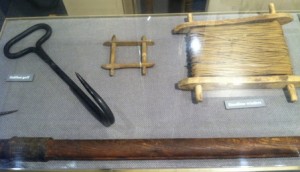
In the days before their fateful sail back to shore for the weekend, Philip Ashton and his five-man crew of Marblehead fishermen had been hauling cod anywhere from ten to more than thirty miles off Cape Sable, at the southern tip of what is today Nova Scotia. Leaning over the low rails at the side of their schooner, the young men caught cod by hand-lining, a tedious method of fishing that was prevalent before the introduction of large nets on offshore trawlers. The men dropped weighted lines into the sea, each of the men typically handling at least two lines at a time. As the fish were hooked, the men hauled the lines back up and lifted the heavy cod over the rails of the schooner and into a box on the deck. When the pile of fish sitting on the deck of the schooner grew large, it had to be stowed below in the hold. Every few hours some of the crew would break away to clean and pack the cod; with a few rapid slices of a knife, a fisherman would remove the head from each fish and slice its belly almost completely open. The gutted fish were then spread out flat like an open book and packed away in salt below deck.
Included in the many objects on display in the museum at the Salt Pond Visitor Center on Cape Cod are some of the tools used by early handliners. These tools include a handline winder — a wooden frame used to coil fishing lines as they were hauled in — and an iron gaff, which was used to haul the large cod into the boat once they were brought to the surface.
As suggested by the size of the gaff shown here, many of the cod Ashton and the other fishermen landed in 1722 were large fish, much longer than the Atlantic cod caught today, and often twice as heavy. Even a century after Ashton’s lifetime, a fisherman off the coast of Massachusetts landed a six-foot cod that weighed 211 pounds.






